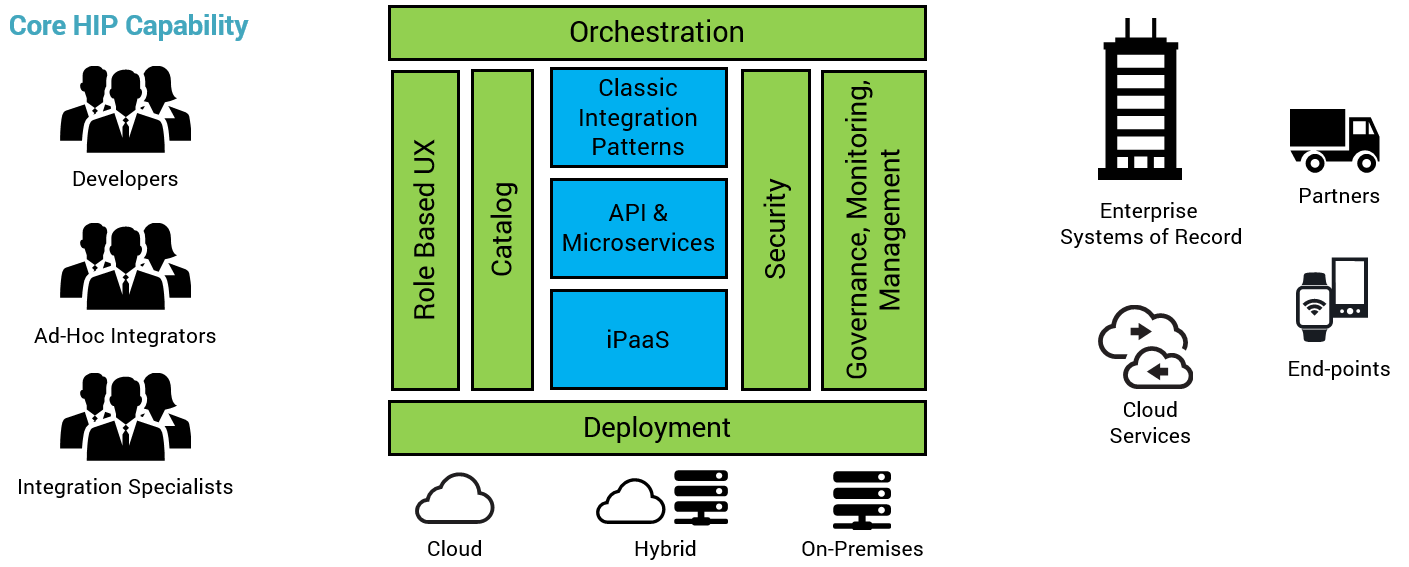Hybrid integration is more a style of accomplishing integration than it is a product. As such, it requires you to change the way your organization does integration. It represents a shift in approach, which means new processes, new skills, new or redefined roles in your organization. Yes, a Platform can help.
What are you going to have to do to support hybrid integration?
The big shift is from IT being the “Creator” of integrations to IT being the “Enabler” of integrations. Your IT integration teams shift to identifying standard integration points/patterns and determining policy (e.g. security, service levels) regarding using these integration points instead of creating each new integration. IT becomes the producers of API and Microservices that they publish in catalog’s/repositories for consumption by a new type of integrator. These are ad-hoc integrators, LOB power users and solution partners, who are the creators of innovation through new applications and solutions.
What can hybrid integration applications help you do?
Vendors are busy building out the foundational services to enable your Hybrid Integration shift. This high-level diagram depicts the capabilities needed;

How to get started
You are already on a Hybrid Integration journey. Most organizations are supporting classic integration patterns (e.g. files, transactions), APIs, and maybe even cloud-based application integrations (e.g. iPaaS). The next step is to bring these separate patterns into a platform environment to support new roles for producing and consuming new integrations.
- Learn all you can
- Do a sample project to prove the value
- Ask for a budget to move Hybrid Integration forward
- Find a solution partner that has a vision that aligns to your vision – look for partnerships with the specialized products you are using (e.g., Stoplight, Ping Identity, Streamdata.io, etc.)
Learn more about Hybrid Integration Platform in the resource library.

Follow us on social